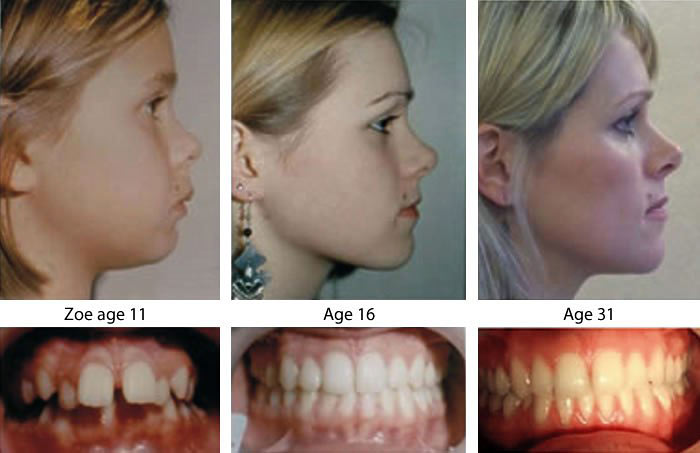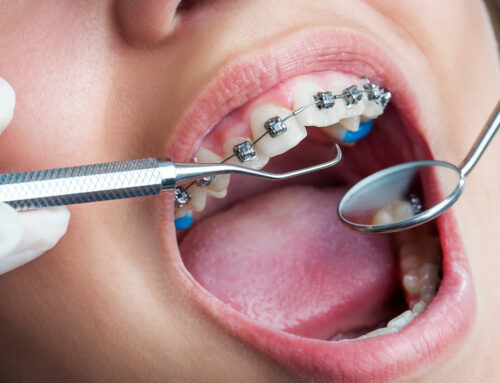As I explained in this article, palatal expansion (also known as orthodontic expansion) is a treatment that focuses on expanding the dental arch. This is often done to address airway-related health issues, especially those related to sleep-disordered breathing conditions such as sleep apnea.
To many who don’t know the history, palatal expansion can seem like a bold new innovation. But it’s not actually all that recent a development.

Image © John Mew Orthotropics
Believe it or not, over a hundred and fifty years ago, some dentists, orthodontists, and oral surgeons were already investigating methods to expand the palate and widen the airway. It’s fascinating to consider that the first paper ever published on palatal expansion appeared in Dental Cosmos way back in 1860. It was published by Dr. Emerson C Angell, an American Dentist who has become known as one of the earliest originators of rapid maxillary expansion.
A Look Into The History Of Palatal Expansion
I knew that palatal expansion wasn’t all that new but the sheer length of time that dentists had been looking into this approach was brought to my attention again recently. One of my favorite orthodontists, Dr. Kevin Boyd shared an old article. It originally appeared in a 1968 issue of the American Journal Of Orthodontics. The article is titled History Repeats Itself, and it looks back at developments in the field of orthodontics in the early 1900’s. The full article can be found at the link below:
The article states:
“It was at about the time of World War I that several orthodontists (including A. H. Ketcham of Denver, Colorado, and Dr. Bogue of New York City) came out with considerable printed text, reporting the widening of the intermaxillary suture by orthodontic means. Much also was being written in the medical periodicals by such oral surgeons as G. V. I. Brown, of Milwaukee, Wisconsin, and W. H. Haskin, of New York.
Accordingly, in 1912 and 1913, The Laryngoscope, an international monthly journal devoted to the diseases of the ear, nose, and throat, published a number of articles concerning the relief of nasal obstruction through orthodontic treatment. As a result of that interest, several orthodontists were asked to contribute articles at the meeting of the Section on Laryngology and Rhinology of the New York Academy of Medicine on March 27, 1912.
Some of the articles read before that meeting were published in a special “Orthodontia Number” of The Laryngoscope in November 1912. The contents of that issue were as follows:
1. The Relief of Nasal Obstruction by Orthodontia – A Plea for Early Recognition on Correction of Faulty Maxillary Development. W. H. Haskin, M.D., New York, NY
2. The Development of the Teeth and Occlusion as Factors in the Development of Facial Bones. Frederick Bogue Noyes, D.D.S., Chicago, Ill
3. Treatment by the Orthodontist Supplementing That by the Rhinologist. A.Ketcham, D.D.S., Denver, Colo.
4. X-ray Measurement of the Permanent Teeth Before Eruption to Provide for Early Regulation of the Dental Arch. Sinclair Tousey, M.D., New York, N. Y.
This number is now a collector’s item of no small interest and makes very interesting reading to one who has more than a casual interest in the subject.
Fifty-five years ago, the discussion was about whether the contracted maxillary arch should be expanded rapidly (palatal suture separation) or more slowly. During the intervening years, this argument was forgotten, only to return a half-century later.”
History Does Repeat Itself!
The article goes on to say that all the way back in November 1912, W. H. Haskin, M.D “…opened the discussion by expressing his belief that there were many cases, especially in children, in which there was a great need for increased nasal space, regardless of whether or not there were deflected septa. He stated that the majority of these cases could be rapidly relieved by orthodontic treatment.”
That’s still true today, and perhaps it’s even more true today than it was back then given the epigenetic changes that have taken place in the intervening years.
What’s so interesting to me is that an additional fifty years have passed since the 1968 publication date of that article and we’re still having more or less the same discussions. Orthodontic expansion is far more common today than it was back then, there’s no doubt about that.
However, it’s still not seen as the first choice in addressing airway issues. I’ve been to enough conferences and have spoken to enough dentists, orthodontists, and myofunctional therapists to know that airway-focused dental professionals are still very much in the minority.
There’s still a small, core group of dental professionals working to change that status quo, exactly the way similar groups were in 1968 and even further back, as we can see from the 1912 article.
These modern dental pioneers are trying to increase awareness of the connection between sleep disordered breathing and sub-optimal facial development. They’re also pushing for earlier intervention in orthodontic treatment, as you’ll see in this video interview I did recently with Dr. Derek Mahony:
The Future Of Orthodontic Expansion And Airway-Focused Dentistry
The great news for airway-focused dentistry is that there’s so much research being conducted right now. It’s becoming difficult to ignore the benefits of palatal expansion, and other treatment methodologies that address and treat the airway, such as myofunctional therapy.
There are also a number of organizations offering education and training relating to the airway including Spear Education and The International Association of Facial Growth Guidance.
The Internet and social media are adding another dimension to the increased awareness around airway-focused dentistry, allowing both patients and health professionals to learn more about this fascinating subject. Being able to do their own research and reach out to dentists, orthodontists, and myofunctional therapists who are aware of the importance of the airway is extremely empowering for patients.
All of these ongoing changes give me a lot of hope that history doesn’t need to repeat itself. We’re experiencing a paradigm shift in dentistry and healthcare, and I’m so excited to be a part of it.




